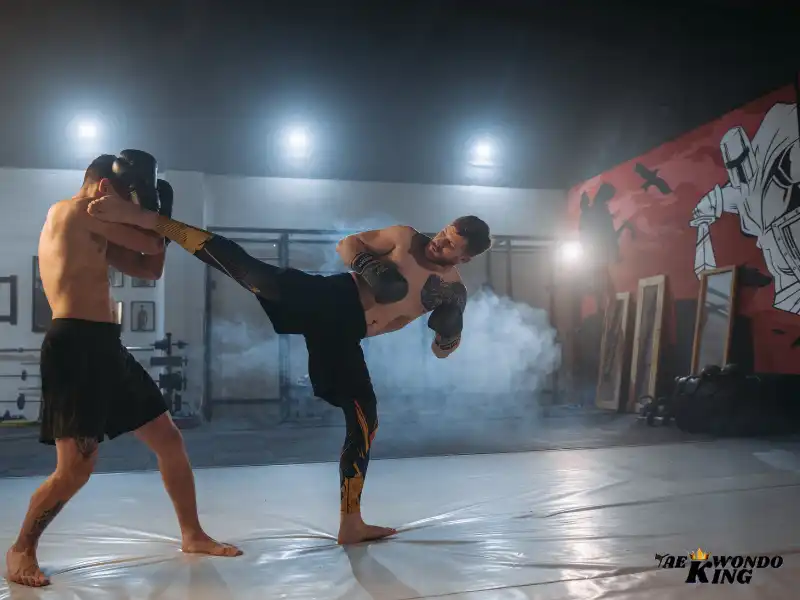
I used to wonder which style would actually help if things got real—you know, beyond movies and padded mats. After years of training, sparring, and coaching, I’ve explored many and finally narrowed down what truly feels like the most effective martial art. It’s not just about flashy kicks or brute strength—it’s what works when it counts.
Get updates by joining the TaekwondoKing official WhatsApp channel.
In this article, I’ll share insights from real experience to help you find the right fit. Stick around, and let’s uncover what makes a martial art truly powerful in the real world.
How to Choose the Right Martial Art?
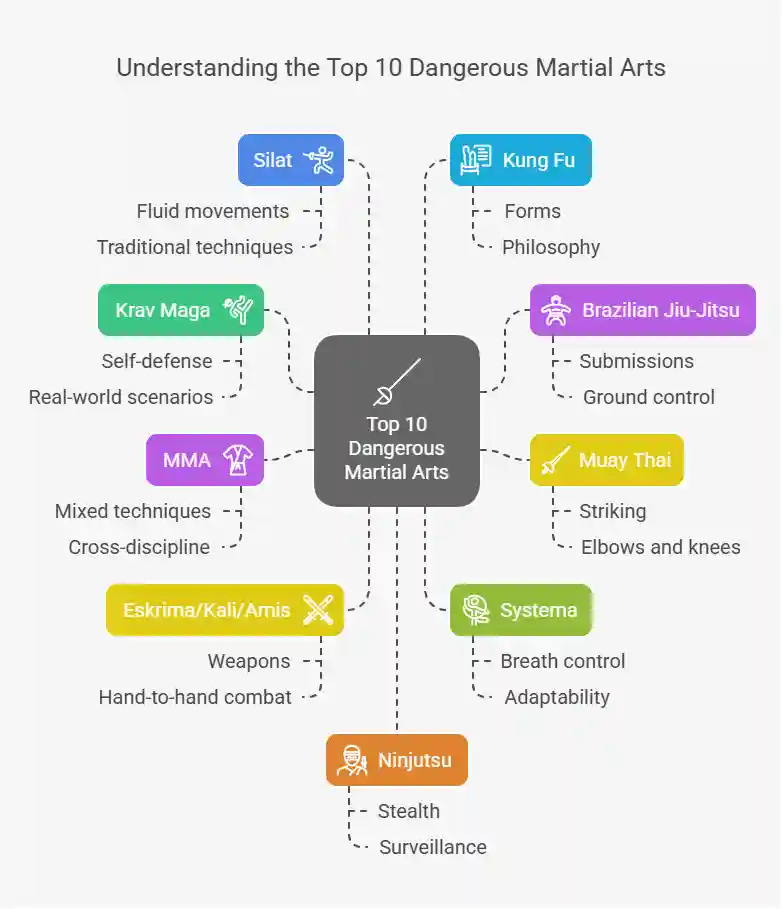
Choosing the right martial art can make a significant difference in the quest for effective self-defense. This guide explores the top 10 most effective martial arts for actual fights, considering their practicality, adaptability, and proven effectiveness in real-world combat scenarios. Today we are showing the list of the top 10 most effective martial arts in a real fight.
Knowing which martial art is the most effective is essential for anyone interested in learning self-defense. It is important to select a martial art style that has proven to be successful in real-world scenarios. The ten most effective martial arts for self-defense are Krav Maga, Brazilian Jiu-Jitsu, Muay Thai, Aikido, Boxing, Judo, Taekwondo, Wing Chun, Karate, and Kung Fu. Each style has its strengths and weaknesses, so it is important to understand the basics of each to choose the best one for you.
Learning martial arts can be a very rewarding experience, but it is important to know which martial arts are the most effective in a real fight when considering which technique to focus on for practical self-defense applications. We have narrowed down the list to the top 10 most effective martial arts for self-defense in a real fight.
Check out the latest prize in Most Effective Martial Arts on Amazon.

Krav Maga:
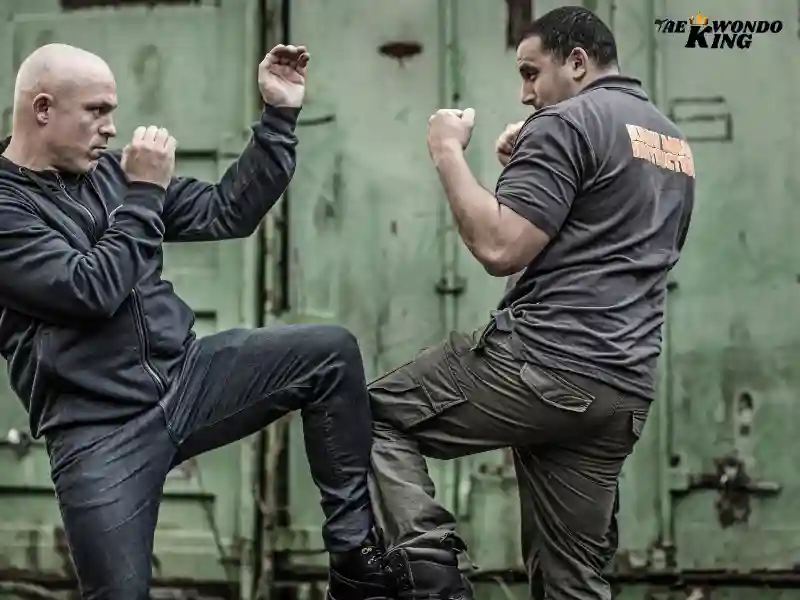
In the realm of self-defense, Krav Maga stands out as a martial art renowned for its practicality, efficiency, and real-world effectiveness. This comprehensive guide explores the essence of Krav Maga, delving into its techniques, training methodologies, and the reasons behind its status as one of the most sought-after martial arts for personal protection.
Origins and Philosophy:
Krav Maga, developed in Israel, has a unique history rooted in practical combat scenarios. This section will trace the origins of Krav Maga, exploring its evolution from street-fighting techniques to a disciplined martial art designed for self-defense.
Practical Techniques for Real-World Scenarios:
The core strength of Krav Maga lies in its practical techniques tailored to real-world situations. This section will delve into the fundamental techniques of Krav Maga, including strikes, kicks, grabs, and defenses against common threats, emphasizing simplicity and efficiency.
Adaptive Training Methodology:
Krav Maga’s training methodology is adaptive and scenario-based. This section will explore how Krav Maga practitioners engage in realistic scenarios during training, fostering quick decision-making, muscle memory, and the ability to respond effectively under stress.
Versatility and Integration:
One of Krav Maga’s key features is its versatility, integrating elements from various martial arts and self-defense systems. This section will highlight how Krav Maga’s adaptive approach allows practitioners to draw from a broad range of techniques, creating a comprehensive skill set for self-defense.
Defense Against Multiple Attackers:
Krav Maga excels in scenarios involving multiple attackers, emphasizing the importance of neutralizing threats swiftly. This section will explore specific Krav Maga techniques and strategies designed to handle multiple opponents, a crucial aspect of real-world self-defense.
Check out the latest prize in Most Effective Martial Arts on Amazon.

Weapon Defenses:
Krav Maga extends its practicality to weapon defenses, equipping practitioners to handle threats involving knives, sticks, and firearms. This section will delve into the principles and techniques employed in Krav Maga for disarming and defending against armed attackers.
Fitness and Conditioning:
Krav Maga’s training goes beyond techniques, incorporating rigorous fitness and conditioning routines. This section will discuss how Krav Maga’s emphasis on physical fitness enhances practitioners’ overall readiness for self-defense, ensuring they are agile, strong, and enduring.
Global Recognition and Training Centers:
Krav Maga’s global recognition has led to the establishment of training centers worldwide. This section will explore the growth of Krav Maga internationally, including certifications, instructor training, and the accessibility of classes for enthusiasts and serious practitioners alike.
Civilian and Military Applications:
Krav Maga’s adaptability extends to both civilian and military applications. This section will highlight how Krav Maga techniques are tailored for different contexts, emphasizing self-defense for civilians and specialized training for military and law enforcement personnel.
Personal Empowerment and Confidence:
Beyond the physical aspects, Krav Maga fosters personal empowerment and confidence. This section will explore how Krav Maga training not only equips individuals with effective self-defense skills but also instills mental resilience and a sense of empowerment.
Brazilian Jiu-Jitsu (BJJ):
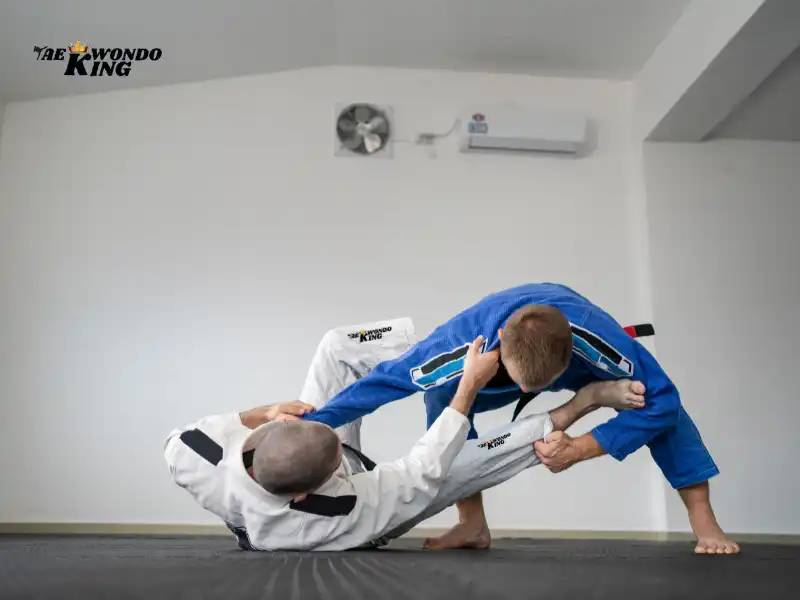
Brazilian Jiu-Jitsu (BJJ) stands as a martial art distinctively celebrated for its ground-fighting prowess, intricate submissions, and strategic brilliance. In this exploration of BJJ, we delve into the origins, techniques, and unique aspects that make it a renowned and influential discipline in the world of martial arts.
Origins and Evolution:
Rooted in the Japanese martial art of Judo, BJJ emerged in Brazil through the efforts of the Gracie family. This section will trace the lineage of BJJ, detailing how it evolved from Judo and adapted to emphasize ground fighting, leverage, and technique over sheer physical strength.
Ground-Fighting Mastery:
At the heart of BJJ lies a focus on ground-fighting mastery. Practitioners, commonly referred to as “jiu-jitters,” excel in controlling and submitting opponents on the ground. This section will explore the principles of ground-fighting in BJJ, highlighting positional control, escapes, and transitions.
Strategic Brilliance:
BJJ is often likened to a physical chess match, emphasizing strategy and foresight. This section will delve into how BJJ practitioners use technique, timing, and mental agility to outmaneuver opponents, making it a thinking person’s martial art that rewards intelligence and adaptability.
Submissions and Joint Locks:
One of the defining features of BJJ is its extensive repertoire of submissions and joint locks. From armbars and triangles to chokes and leg locks, this section will showcase the diversity of submissions in BJJ and how practitioners employ these techniques to control and ultimately submit opponents.
Gi and No-Gi Training:
BJJ offers practitioners the option to train with or without the traditional gi, a uniform worn in many martial arts. This section will discuss the differences between gi and no-gi training, exploring how the gi provides additional grips and opportunities for control, while no-gi training emphasizes speed and adaptability.
Belts and Rank System:
The BJJ belt system is a visible representation of a practitioner’s skill and experience. This section will outline the belt progression in BJJ, from white to black belt, and the significance of each belt in terms of skill level and knowledge.
Check out the latest prize in Most Effective Martial Arts on Amazon.

Brazilian Jiu-Jitsu for Self-Defense:
While BJJ excels in sportive settings, it is also a formidable system for self-defense. This section will discuss how BJJ’s focus on ground control and submissions can be applied in real-world scenarios, empowering practitioners to defend themselves efficiently.
Global Expansion and Tournaments:
BJJ has witnessed remarkable global expansion, with tournaments held worldwide showcasing the skills of practitioners. This section will highlight the growth of BJJ as a global phenomenon and the prestigious tournaments that draw competitors from diverse backgrounds.
Community and Camaraderie:
BJJ fosters a sense of community and camaraderie among practitioners. This section will explore the unique culture of BJJ academies, emphasizing mutual respect, continuous learning, and the supportive relationships that develop among jiu-jitters.
Brazilian Jiu-Jitsu stands as a dynamic martial art celebrated for its ground-fighting mastery, strategic brilliance, and diverse range of submissions. From its origins in Brazil to its global prominence today, BJJ continues to captivate enthusiasts seeking physical fitness, mental agility, and self-defense skills. Whether on the mats of a local academy or the grand stage of international tournaments, Brazilian Jiu-Jitsu remains a testament to the enduring legacy of martial arts and the evolution of combat disciplines.
Muay Thai:
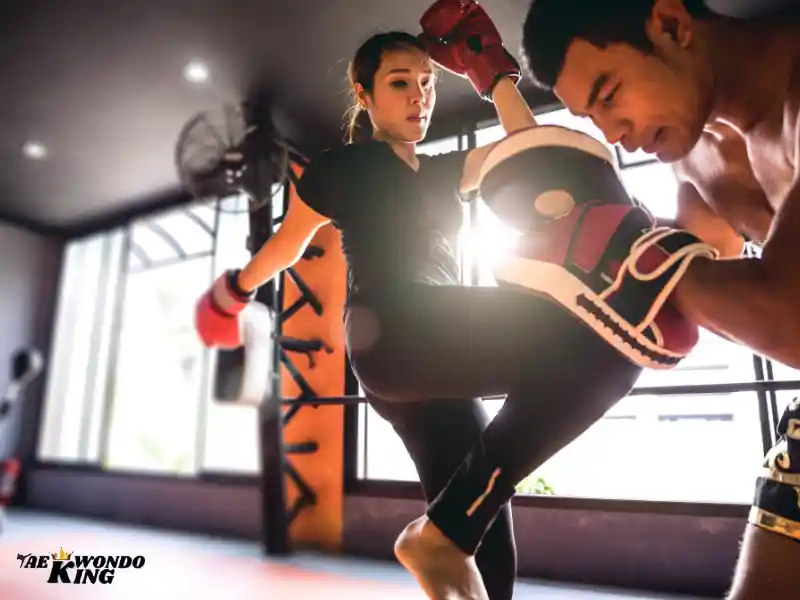
Muay Thai, known as the “Art of Eight Limbs,” stands as a martial art that encapsulates the rich cultural heritage of Thailand while showcasing a unique blend of power, precision, and tradition. In this exploration of Muay Thai, we delve into its origins, techniques, and the distinctive elements that make it a formidable and revered combat discipline.
Origins and Cultural Significance:
Rooted in the ancient martial traditions of Thailand, Muay Thai has evolved from military training to a sport celebrated globally. This section will trace the historical roots of Muay Thai, emphasizing its cultural significance and the role it plays in Thai society.
The Art of Eight Limbs:
Muay Thai is aptly dubbed the “Art of Eight Limbs” due to its emphasis on using fists, elbows, knees, and shins for striking. This section will explore how Muay Thai practitioners harness the full range of their limbs to create a diverse and powerful striking arsenal.
Powerful Strikes and Clinch Work:
At the core of Muay Thai lies an emphasis on powerful strikes and effective clinch work. This section will delve into the mechanics of Muay Thai strikes, including devastating kicks, elbows, and knee strikes, and how the clinch is employed for control and strategic maneuvering.
Training and Conditioning:
Muay Thai training goes beyond technique, incorporating rigorous physical conditioning. This section will discuss how Muay Thai practitioners engage in intense training regimens, emphasizing strength, endurance, and flexibility to endure the demands of the sport.
Check out the latest prize in Most Effective Martial Arts on Amazon.

Traditional Muay Thai Stance and Footwork:
The Muay Thai stance is distinctive, designed to provide balance, mobility, and readiness to strike. This section will explore the traditional Muay Thai stance and footwork, emphasizing the importance of positioning and movement in executing effective strikes and defenses.
Cultural Rituals and Ceremonies:
Muay Thai is deeply intertwined with Thai culture, evident in the rituals and ceremonies that precede fights. This section will discuss the Wai Kru Ram Muay, a pre-fight dance performed by fighters to pay homage to their trainers, ancestors, and the spirit of Muay Thai itself.
Muay Thai in the Global Arena:
In recent decades, Muay Thai has transcended its cultural origins to become a global phenomenon. This section will highlight the international appeal of Muay Thai, with practitioners and enthusiasts from diverse backgrounds contributing to its growth and popularity.
Muay Thai Competitions and Championships:
Muay Thai boasts a vibrant competition scene, with local and international events drawing skilled fighters. This section will explore the structure of Muay Thai competitions, from traditional Thai stadiums to high-profile international championships.
Mental Toughness and Discipline:
Muay Thai demands not only physical prowess but also mental toughness and discipline. This section will delve into the mental aspects of Muay Thai training, emphasizing the importance of focus, resilience, and strategic thinking in the heat of combat.
Boxing:
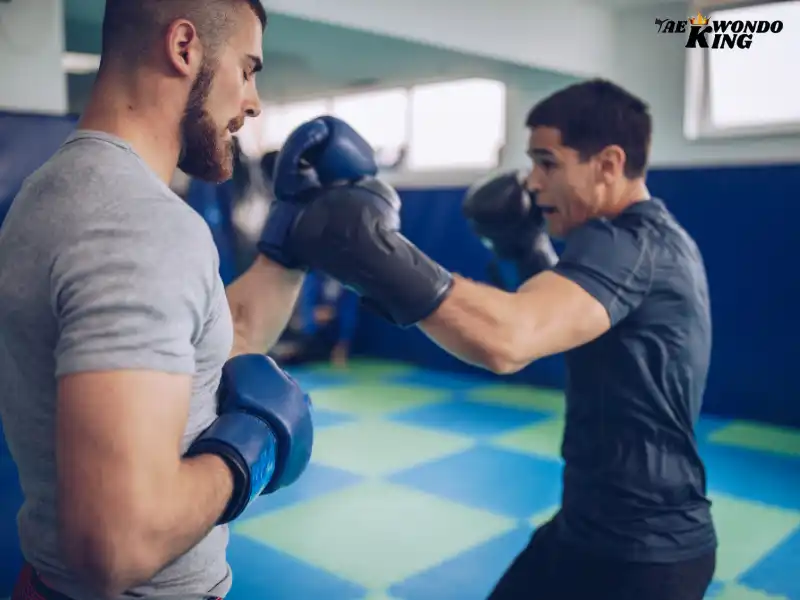
Boxing, often referred to as the “Sweet Science,” is a time-honored martial art that combines power, precision, and endurance in the squared ring. In this exploration of boxing, we unravel its rich history, fundamental techniques, and the enduring allure that has made it a globally celebrated sport.
Historical Roots and Evolution:
Dating back to ancient civilizations, boxing has evolved from a raw, unregulated form of combat to a sophisticated sport with defined rules. This section will trace the historical roots of boxing, from its inclusion in the ancient Olympic Games to the modern, highly regulated version we witness today.
The Art of Striking:
At the heart of boxing lies the art of striking, with fists serving as the primary weapons. This section will delve into the fundamental techniques of boxing, including jabs, crosses, hooks, and uppercuts, highlighting the precision and skill required to deliver powerful and accurate punches.
Footwork and Ring Craft:
Boxing is as much about footwork and ring craft as it is about punching. This section will explore the importance of footwork in creating angles, maintaining balance, and controlling distance, showcasing how a boxer’s movement is integral to their overall strategy.
Defensive Techniques:
Defensive prowess is a hallmark of a skilled boxer. This section will discuss defensive techniques such as slips, blocks, and parries, showcasing how boxers use these skills to evade punches and minimize damage while remaining poised for counterattacks.
Check out the latest prize in Most Effective Martial Arts on Amazon.

Training and Conditioning:
Boxing demands rigorous training and conditioning to hone both physical and mental attributes. This section will delve into the training regimens of boxers, emphasizing aspects such as cardiovascular fitness, strength training, and sparring to prepare for the demands of the ring.
Weight Classes and Championships:
Boxing is organized into weight classes, allowing fighters of similar size and weight to compete fairly. This section will explore the significance of weight classes in boxing and highlight the prestigious championships that define a boxer’s career, including the revered titles in various divisions.
Global Popularity and Icons:
Boxing has transcended cultural boundaries to become a global phenomenon. This section will discuss the international appeal of boxing, with iconic fighters like Muhammad Ali, Mike Tyson, and Manny Pacquiao leaving an indelible mark on the sport and inspiring generations of enthusiasts.
Boxing as a Martial Art and Fitness Pursuit:
Beyond the professional ring, boxing has found a place as a martial art for self-defense and a popular fitness pursuit. This section will explore how boxing training provides an effective means of self-defense and a high-intensity workout that improves overall fitness.
Sportsmanship and Respect:
Boxing places a strong emphasis on sportsmanship and respect for opponents. This section will discuss the code of conduct within the boxing ring, highlighting how fighters display respect before, during, and after matches, fostering a culture of honor and integrity.
Taekwondo
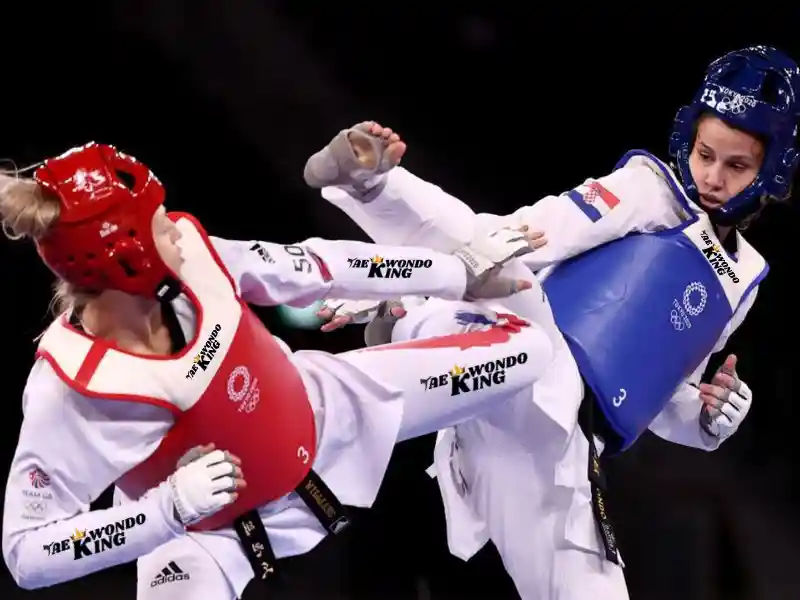
Taekwondo, a dynamic martial art originating from Korea, has garnered global acclaim for its emphasis on precision, discipline, and unparalleled kicking techniques. In this exploration of Taekwondo, we delve into its historical roots, fundamental principles, and the distinctive elements that make it a revered and impactful martial art.
Historical Heritage:
Taekwondo’s roots trace back to ancient Korean martial arts, evolving over centuries into the discipline we recognize today. This section will provide an overview of Taekwondo’s historical heritage, highlighting its journey from traditional Korean martial arts to a globally practiced and respected form.
The Art of Kicking:
At the heart of Taekwondo lies the art of kicking, with practitioners showcasing a wide array of dynamic and powerful kicks. This section will delve into the fundamental kicking techniques of Taekwondo, including the iconic roundhouse kick, side kick, and spinning kicks, emphasizing the precision and speed required for their execution.
Forms (Poomsae) and Patterns:
Taekwondo incorporates a series of choreographed movements known as forms or poomsae. This section will explore the significance of forms in Taekwondo, emphasizing how these patterns serve as a means of practicing techniques, showcasing fluidity, and instilling discipline in practitioners.
Sparring and Combat Techniques:
Taekwondo practitioners engage in controlled sparring sessions to apply techniques in a simulated combat environment. This section will discuss the sparring aspect of Taekwondo, highlighting the strategic use of kicks, punches, and blocks, showcasing how practitioners develop timing, distance control, and adaptability.
Check out the latest prize in Taekwondo equipment on Amazon.

Belt System and Rank Advancement:
Taekwondo follows a structured belt system, with practitioners progressing through ranks based on their skills and knowledge. This section will outline the belt hierarchy in Taekwondo, emphasizing the significance of each belt color and the journey of continuous improvement and learning.
Tenets and Philosophical Foundations:
Taekwondo is not merely a physical practice but also a discipline that emphasizes moral and ethical principles. This section will explore the five tenets of Taekwondo—courtesy, integrity, perseverance, self-control, and indomitable spirit—underscoring the martial arts’s commitment to shaping not just skilled fighters but also individuals of character.
Olympic Recognition and Global Influence:
Taekwondo’s inclusion in the Olympic Games has significantly elevated its global status. This section will discuss Taekwondo’s recognition as an Olympic sport and its influence on the world stage, attracting practitioners and enthusiasts from diverse backgrounds.
Cultural Celebrations and Events:
Taekwondo is celebrated through cultural events, tournaments, and championships worldwide. This section will highlight the significance of Taekwondo competitions, emphasizing the skill, athleticism, and sportsmanship displayed by participants in events such as the World Taekwondo Championships.
Self-Defense Applications:
Beyond the competition setting, Taekwondo techniques find practical applications in self-defense scenarios. This section will discuss how the discipline’s emphasis on precise kicks and strikes can be effectively utilized for self-defense, empowering practitioners with practical skills for personal protection.
Jeet Kune Do:
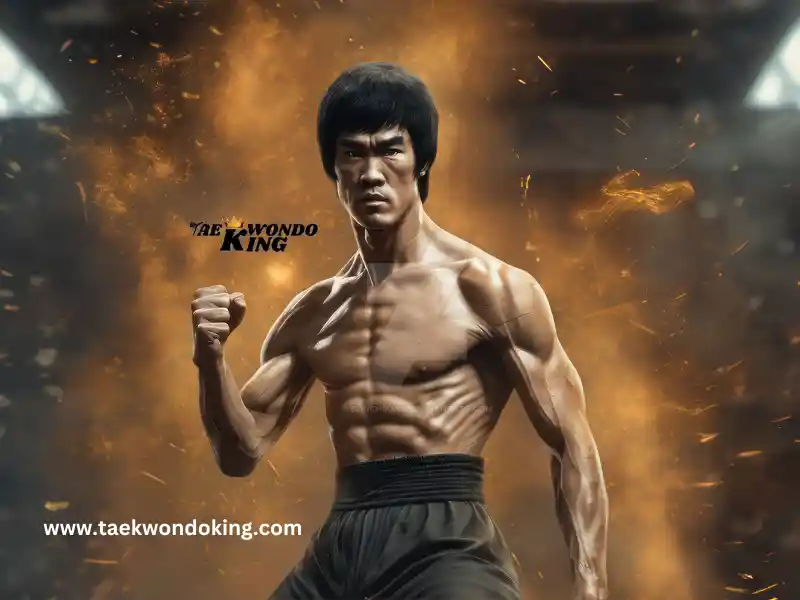
Jeet Kune Do, the martial art founded by the legendary Bruce Lee, represents a philosophy of combat that prioritizes simplicity, adaptability, and the continuous quest for martial mastery. In this exploration of Jeet Kune Do, we delve into its origins, core principles, and the distinctive elements that make it a revered and influential martial art.
Origins and Bruce Lee’s Vision:
Jeet Kune Do, translated as “The Way of the Intercepting Fist,” was conceptualized by Bruce Lee in the 1960s. This section will explore the origins of Jeet Kune Do, emphasizing Bruce Lee’s vision of creating a martial art that goes beyond traditional styles, embracing the most effective techniques from various disciplines.
Core Principles of Jeet Kune Do:
At the heart of Jeet Kune Do lie a set of core principles that define its unique approach to combat. This section will delve into these principles, including the interception of attacks, economy of motion, directness, simplicity, and the cultivation of personal expression in martial techniques.
Economy of Motion and Simplicity:
Jeet Kune Do places a strong emphasis on efficiency and simplicity in movement. This section will discuss how practitioners strive for an economy of motion, eliminating unnecessary techniques and focusing on direct, effective responses, making Jeet Kune Do a practical and streamlined martial art.
Adaptability and Absorption:
A distinctive feature of Jeet Kune Do is its philosophy of continuous adaptation. This section will explore how Jeet Kune Do encourages practitioners to absorb what is useful from various martial arts, discard what is not, and constantly evolve their techniques based on personal experience and experimentation.
Emphasis on Sparring and Realistic Training:
Jeet Kune Do places great importance on sparring and realistic training scenarios. This section will highlight how practitioners engage in dynamic sparring sessions, applying techniques in a live setting to enhance timing, reflexes, and adaptability, aligning with Bruce Lee’s belief in practical combat effectiveness.
Individual Expression and Personal Journey:
Jeet Kune Do recognizes the individuality of each practitioner. This section will discuss how Jeet Kune Do encourages personal expression in martial techniques, allowing practitioners to develop their unique fighting style and embark on a personal journey of self-discovery within the martial arts.
Check out the latest prize in Most Effective Martial Arts on Amazon.

Jeet Kune Do’s Influence on Mixed Martial Arts (MMA):
Jeet Kune Do’s influence extends to modern mixed martial arts (MMA). This section will explore how the principles of Jeet Kune Do have contributed to the evolution of MMA, influencing fighters to adopt a well-rounded skill set and adaptability in diverse combat scenarios.
Philosophy Beyond the Physical:
Jeet Kune Do extends beyond physical techniques to encompass a philosophical approach to life. This section will discuss how the principles of simplicity, adaptability, and personal growth promoted in Jeet Kune Do have inspired practitioners to apply these principles beyond martial arts in their daily lives.
Legacy and Global Impact:
Jeet Kune Do’s legacy endures through its impact on martial arts philosophy and its influence on practitioners worldwide. This section will highlight how Jeet Kune Do’s principles continue to resonate, shaping the way martial artists approach combat and personal development.
Kickboxing:
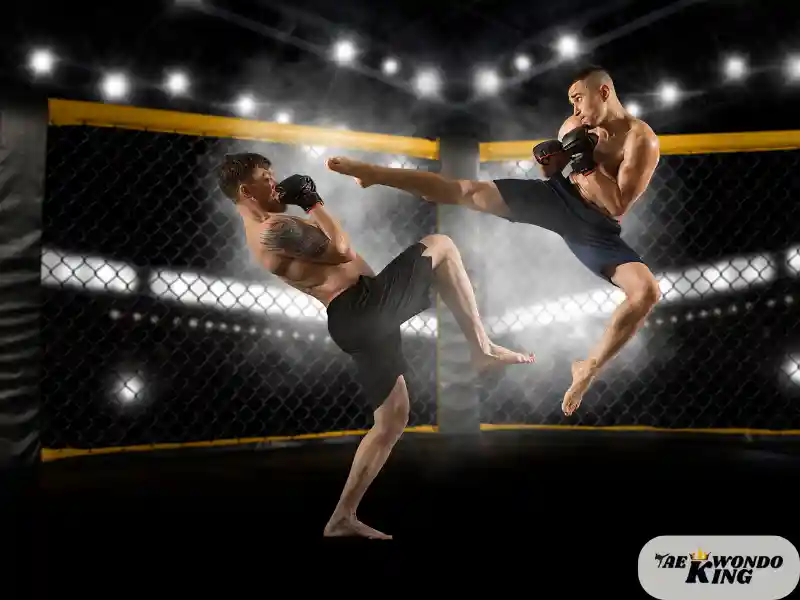
Kickboxing, a high-energy martial art that fuses traditional kicking techniques with punches, has gained global popularity for its dynamic and effective approach to striking. In this exploration of kickboxing, we delve into its origins, key techniques, and the unique elements that make it a top-tier martial art and fitness pursuit.
Historical Evolution:
Kickboxing traces its roots to traditional martial arts and has evolved into a modern sport practiced worldwide. This section will provide an overview of kickboxing’s historical evolution, highlighting its journey from traditional forms to the development of full-contact and competitive kickboxing.
Combination of Kicking and Punching:
The essence of kickboxing lies in its seamless combination of powerful kicks and precise punches. This section will delve into the fundamental techniques of kickboxing, emphasizing the dynamic range of kicks, such as roundhouse kicks and front kicks, coupled with straight punches and hooks, creating a versatile and effective striking arsenal.
Cardiovascular Fitness and Full-Body Workout:
Kickboxing is renowned for its ability to deliver an intense cardiovascular workout. This section will explore how kickboxing engages the entire body, requiring constant movement, agility, and explosive power, making it an exceptional form of exercise that enhances cardiovascular fitness and promotes overall health.
Check out the latest prize in Most Effective Martial Arts on Amazon.

Training Regimens and Conditioning:
Kickboxing training involves a combination of bag work, shadowboxing, and sparring sessions. This section will discuss the diverse training regimens in kickboxing, emphasizing the importance of conditioning exercises, such as jump rope drills and plyometrics, to build strength, speed, and endurance.
Variations in Kickboxing Styles:
Kickboxing has various styles and rule sets, including full-contact, semi-contact, and Muay Thai kickboxing. This section will explore the differences in these styles, emphasizing how rulesets and techniques vary, catering to different preferences and objectives for practitioners.
Kickboxing for Self-Defense:
While kickboxing is a popular sport, its techniques can also be applied for self-defense. This section will discuss how kickboxing’s emphasis on striking techniques, footwork, and defensive maneuvers can be adapted for practical self-defense scenarios, empowering individuals with effective tools for personal protection.
Competitions and Championships:
Kickboxing competitions showcase the skill and prowess of practitioners on an international stage. This section will highlight the significance of kickboxing championships, including events like K-1, Glory, and various national and regional tournaments, where elite fighters demonstrate their expertise and vie for prestigious titles.
Mental Toughness and Discipline:
Kickboxing requires mental toughness and discipline, fostering a resilient mindset in practitioners. This section will delve into the mental aspects of kickboxing, emphasizing how the sport instills qualities such as focus, determination, and the ability to overcome challenges, contributing to personal growth beyond physical fitness.
Global Popularity and Fitness Trends:
Kickboxing has become a global fitness trend, with classes offered in gyms and studios worldwide. This section will explore the global popularity of kickboxing as a fitness regimen, attracting enthusiasts seeking a challenging and enjoyable workout that combines martial arts techniques with cardiovascular conditioning.
Sambo:
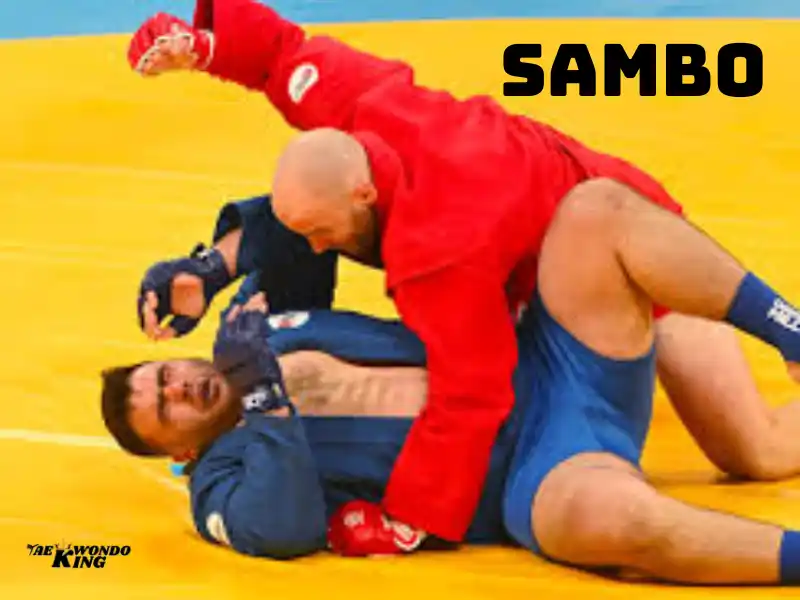
Sambo, a dynamic martial art that originated in Russia, has garnered international recognition for its unique combination of throws, submissions, and strategic brilliance. In this exploration of Sambo, we delve into its historical roots, key techniques, and the distinctive elements that make it a revered martial art and competitive sport.
Historical Origins:
Sambo, an acronym for “SAMozashchita Bez Oruzhiya” or “self-defense without weapons,” originated in the early 1920s in the Soviet Union. This section will provide a brief history of Sambo, emphasizing its development as a martial art that draws inspiration from traditional Russian folk wrestling and judo.
Throws and Takedowns:
At the core of Sambo lies an emphasis on throws and takedowns. This section will delve into the fundamental throwing techniques in Sambo, showcasing the art’s focus on unbalancing opponents and executing dynamic throws, including hip throws, shoulder throws, and leg sweeps.
Ground Control and Submissions:
Sambo places a strong emphasis on ground control and submissions, blending elements of judo and wrestling. This section will explore how Sambo practitioners excel in pinning opponents, transitioning to submissions, and utilizing joint locks and strangles to secure victories on the ground.
Check out the latest prize in Most Effective Martial Arts on Amazon.

Sporting Excellence:
Sambo is not only a martial art but also a highly competitive sport. This section will discuss how Sambo has evolved into an international sport with organized competitions, including the World Sambo Championships and the sport’s inclusion in the program of multi-sport events such as the Asian Games.
Uniform and Belt System:
Sambo practitioners wear a unique uniform that includes a jacket and shorts. This section will explore the distinctive Sambo uniform and its significance in facilitating the execution of throws and ground techniques. Additionally, the article will touch upon the Sambo belt system, which denotes a practitioner’s rank and experience.
Military Applications:
Given its roots in self-defense, Sambo has practical applications in military and law enforcement training. This section will discuss how Sambo’s focus on efficient and effective techniques makes it a valuable martial art for personnel in these fields.
International Recognition and Spread:
Sambo’s popularity has transcended its Russian origins, gaining recognition and practitioners worldwide. This section will highlight how Sambo has become a respected martial art in countries beyond Russia, with international federations promoting its practice and organizing competitions.
Adaptability and Self-Expression:
Sambo’s adaptability is a key aspect that sets it apart. This section will explore how Sambo practitioners can incorporate techniques from other martial arts, allowing for a personalized and self-expressive approach to the art.
Training Philosophy:
Sambo training is rigorous and encompasses various aspects, including throws, ground techniques, and sparring. This section will discuss the training philosophy in Sambo, emphasizing the importance of conditioning, technical precision, and strategic thinking.
Wing Chun:
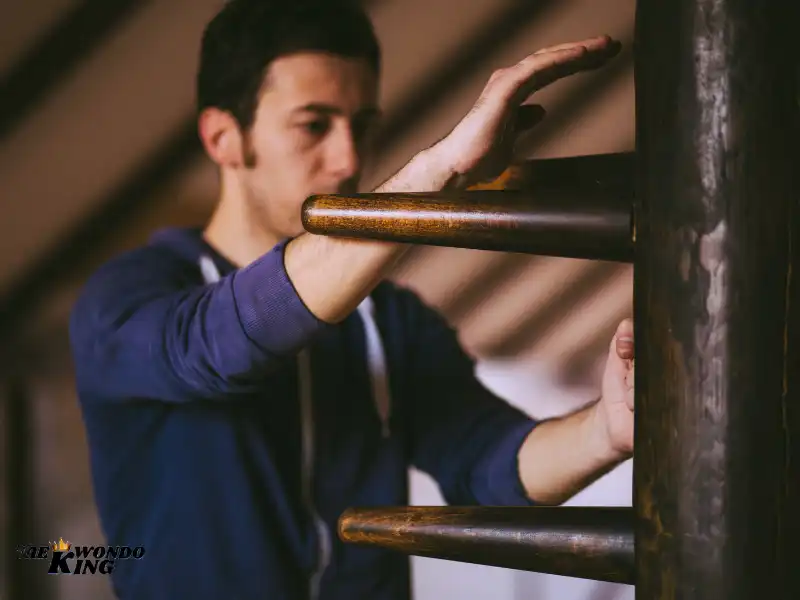
Wing Chun, a traditional Chinese martial art, has gained global recognition for its practicality, efficiency, and emphasis on close-range combat. In this exploration of Wing Chun, we delve into its historical roots, core principles, and the distinctive elements that make it a revered martial art renowned for its practical and effective techniques.
Historical Origins:
Wing Chun traces its origins to the southern Shaolin Temple in China and is often associated with the legendary martial artist Yim Wing Chun. This section will provide a brief history of Wing Chun, highlighting its development as a martial art that prioritizes speed, directness, and practicality.
Centerline Theory and Structure:
At the heart of Wing Chun lies the centerline theory, a fundamental principle that guides its techniques. This section will delve into how Wing Chun practitioners focus on controlling the centerline, the imaginary line running down the middle of an opponent’s body, allowing for efficient attacks and defenses.
Economy of Motion and Simplicity:
Wing Chun places a strong emphasis on the economy of motion and simplicity. This section will explore how Wing Chun techniques are designed to be direct, efficient, and easily executed, making it an ideal martial art for individuals of various ages and physical abilities.
Chi Sao (Sticky Hands):
Chi Sao, or sticky hands, is a unique training drill in Wing Chun. This section will discuss how Chi Sao enhances sensitivity, reflexes, and the ability to read an opponent’s movements, fostering adaptability and precision in close-quarters combat.
Striking Techniques:
Wing Chun is known for its rapid and precise striking techniques. This section will delve into the key strikes in Wing Chun, including the straight punch, palm strike, and various hand techniques, showcasing how these strikes are executed with speed, power, and accuracy.
Trapping and Joint Locks:
Wing Chun incorporates trapping techniques and joint locks to control and immobilize opponents. This section will explore how Wing Chun practitioners use subtle movements to trap an opponent’s limbs, creating opportunities for strikes or joint manipulation.
Check out the latest prize in Most Effective Martial Arts on Amazon.

Wooden Dummy Training:
Wing Chun’s wooden dummy, a training apparatus, plays a crucial role in skill development. This section will discuss how practitioners use the wooden dummy to refine techniques, improve the structure, and develop the muscle memory necessary for effective Wing Chun combat.
Forms (Katas):
Wing Chun features a series of forms, or katas, that encapsulate its techniques and principles. This section will explore the significance of Wing Chun forms, such as Siu Lim Tao and Chum Kiu, in developing foundational skills and understanding the art’s core concepts.
Self-Defense and Real-World Applicability:
Wing Chun’s practicality extends to self-defense applications in real-world scenarios. This section will discuss how the art’s emphasis on close-range combat, quick reflexes, and efficient techniques makes it a valuable martial art for self-defense.
Global Recognition and Influence:
Wing Chun has gained international recognition and has influenced various martial arts and popular culture. This section will highlight Wing Chun’s global appeal, with practitioners and enthusiasts around the world embracing its principles and techniques.
Escrima/Kali/Arnis:
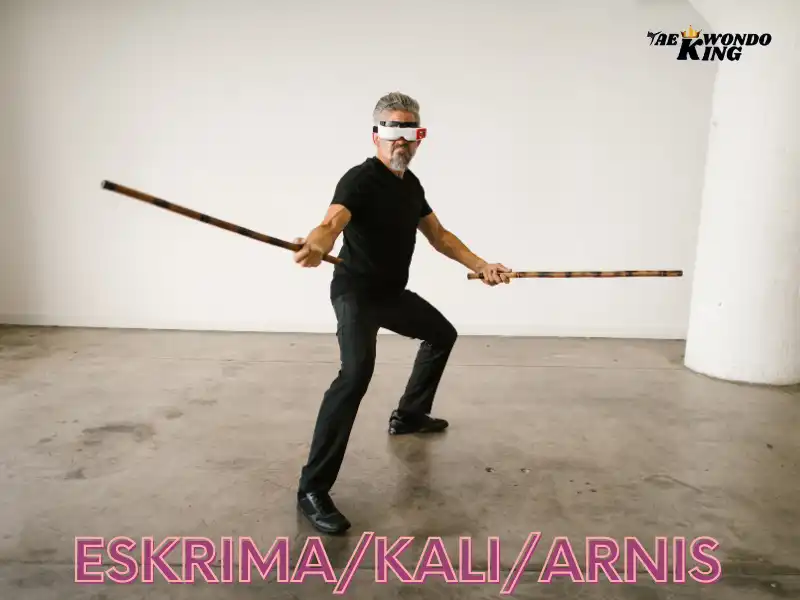
Escrima, Kali, and Arnis, collectively known as Filipino Martial Arts (FMA), represent a rich tapestry of combat techniques and cultural heritage. In this exploration, we delve into the historical roots, core principles, and distinctive elements that make Escrima, Kali, and Arnis revered martial arts known for their efficiency with sticks, blades, and empty-hand techniques.
Historical Heritage:
Filipino Martial Arts have deep historical roots, shaped by the archipelago’s rich cultural and martial traditions. This section will provide an overview of Escrima, Kali, and Arnis, emphasizing their evolution as combat systems developed for self-defense and battlefield applications.
Strikes and Empty-Hand Techniques:
Escrima, Kali, and Arnis are renowned for their dynamic strikes and comprehensive empty-hand techniques. This section will delve into the fluidity and precision of strikes, showcasing how practitioners seamlessly transition between stick, blade, and empty-hand movements with efficiency and effectiveness.
Stick and Blade Fighting:
A hallmark of FMA is the use of sticks and blades in combat. This section will explore how Escrima, Kali, and Arnis practitioners develop proficiency in stick and blade fighting, emphasizing the art’s adaptability to various weapons and scenarios.
Drills and Partner Training:
FMA places a strong emphasis on partner drills, fostering reflexes, coordination, and adaptability. This section will discuss how practitioners engage in structured drills, such as sinawali (weaving patterns) and hudud (flow drills), to enhance their understanding of timing, distance, and defensive maneuvers.
Cultural Influences:
FMA is deeply intertwined with Filipino culture, reflecting historical influences, regional variations, and indigenous weaponry. This section will highlight the cultural significance of FMA, emphasizing how it serves as a repository of Filipino identity and heritage.
Empty-Hand Techniques and Locks:
While FMA is known for its weapon-based techniques, it also encompasses a range of empty-hand techniques and joint locks. This section will explore how Escrima, Kali, and Arnis practitioners develop proficiency in empty-hand combat, including striking, grappling, and controlling techniques.
Modern Applications and Self-Defense:
FMA techniques have practical applications in modern self-defense scenarios. This section will discuss how the adaptability and efficiency of FMA make it a valuable martial art for self-defense, providing practitioners with skills applicable to real-world situations.
Influence on Other Martial Arts:
Escrima, Kali, and Arnis have left a significant impact on other martial arts and combat sports. This section will highlight how elements of FMA, including stick-fighting techniques and footwork, have influenced the development of various martial arts worldwide.
Competitive Arena and Tournaments:
FMA has a vibrant competitive scene with tournaments showcasing skill and technique. This section will explore how Escrima, Kali, and Arnis tournaments provide a platform for practitioners to test their abilities, share knowledge, and celebrate the diversity of Filipino martial arts.
Global Spread and Recognition:
Escrima, Kali, and Arnis have gained recognition beyond the Philippines, with practitioners and schools worldwide. This section will discuss the global spread of FMA, emphasizing how it has become an integral part of the international martial arts community.
Check out the latest prize in Most Effective Martial Arts on Amazon.

What is the most Effective Martial Art in a Real-Life Situation?
The best martial art for you in a real-life situation is the one that fits your unique attributes and needs. Consider things like your size, strength, flexibility, and skill level when making your choice. Some martial arts are better suited to certain scenarios; for instance, judo is great for grappling and throws, while kickboxing is ideal for stand-up fighting. Ultimately, the most effective martial art will be the one that you feel the most confident and comfortable with, and the one that you practice regularly.
What is the best Martial art for self-defense?
Self-defense is an ever-changing discipline, and there is no single answer to which martial art is best. Some of the most popular martial arts for self-defense include Krav Maga, Taekwondo, Jiu-Jitsu, Aikido, and Karate. Each of these martial arts has its pros and cons when it comes to self-defense. It is important to select a martial art based on your learning style, physical capability, and goal. Ultimately, the best martial art for self-defense is the one that you are personally dedicated to mastering.
What is the best sport for real fights?
Mixed Martial Arts (MMA) is the best sport to rely on when it comes to real fighting. MMA is a combination of various combat sports, such as boxing, Muay Thai, Judo, and wrestling. This makes it the most comprehensive sport for real fights, as it allows you to use techniques from all of these disciplines. Even if you don’t have extensive training in any particular martial art, with proper instruction, MMA can be the most effective way to protect yourself from an assailant.
What is the best Martial Art to learn?
It depends on what you want to accomplish and what your preferences are. Martial arts can be divided into hard and soft styles, with some hybrids of the two. Hard styles usually focus on physical conditioning and powerful techniques, whereas soft styles focus on flexibility and avoiding confrontation. When deciding which martial art to learn, it’s important to consider your personal goals and needs. There isn’t a single answer that works for everyone, but there’s sure to be a style that’s perfect for you!
Conclusion:
Selecting the most effective martial art for actual fights involves considering various factors, including the practitioner’s preferences, physical attributes, and the specific challenges they may face. This guide has highlighted the top 10 martial arts known for their proven effectiveness in real-world combat scenarios.
Whether it’s the practicality of Krav Maga, the ground-fighting prowess of BJJ, or the striking power of Muay Thai, each martial art brings a unique set of skills to the table. Ultimately, the effectiveness of martial arts in an actual fight is not solely determined by its style but by the practitioner’s dedication to training, adaptability, and ability to apply techniques in dynamic situations.
Check out the latest prize in Most Effective Martial Arts on Amazon.

FAQ
Can Taekwondo work in a real fight?
Taekwondo is a martial art that emphasizes striking with the feet and hands, as well as evasion techniques like footwork and rolling. It can be effective in a real fight if the practitioner is well-trained and has the courage and discipline to apply the correct techniques in the right situations. With the right preparation, taekwondo can be an effective martial art.
Can Kung Fu be used in a real fight?
Yes, Kung Fu can be used in a real fight. This ancient martial art is designed to be a practical and effective form of self-defense, although it may take many years of training to master. Even a novice can use Kung Fu techniques to defend themselves in a fight, although it’s important to remember that fleeing the scene and seeking help are other self-defense strategies that can be used in dangerous situations.
Can MMA work in a Street fight?
No, MMA techniques should not be used in a real-life street fight. Street fights do not have the same rules and safety measures as MMA fights, so using MMA techniques could lead to serious injury or even death. It is important to remember that MMA techniques should only be used in a sports setting.
What is the most Effective Martial Art in a Street Fight?
The best martial art for a street fight is the one that fits your fighting style and capabilities. Different martial arts have different techniques and levels of intensity, so it is important to find the one that works best for you. You should also consider factors such as your body type, strength, and speed when selecting a martial art. Additionally, having street smarts and the ability to quickly assess a situation can also be key elements to success in a street fight.
What is The Best Fighting Style in Blox Fruits?
It sounds like the best fighting style for Blox Fruits would be flexible and versatile, incorporating a combination of offensive and defensive elements, along with physical and mental abilities to help stay focused and determined. Different opponents and situations should be taken into account to ensure an advantage can be gained.
Check out the latest prize in Most Effective Martial Arts on Amazon.


Founder, Owner, and CEO of TaekwondoKing.
He is one of the top 100 martial artists in the World and among the top 20 referees in Bangladesh.
Ehatasamul Alom is an esteemed Kukkiwon Certified Taekwondo 3rd Dan Black Belt with over 15 years of experience in this dynamic martial art. Born in Rajshahi, Bangladesh, Ehatasamul’s journey with Taekwondo began at the tender age of seven. His passion led him to compete at national and international levels, where he has bagged numerous awards and honors. He is also a member of the Taekwondo National Referee Panel.
With a Bachelor’s degree in Sports Science from the prestigious Rajshahi University, Ehatasamul has a deep understanding of the technical and scientific aspects of martial arts and some other martial arts.
In 2022, Ehatasamul created the “TaekwondoKing.com” blog to share his knowledge and Real experiences. His articles focus on Taekwondo training techniques, competition strategies, and the art’s rich history and philosophy. He also writes about the importance of mental fortitude and discipline, key aspects of his teaching philosophy. His goal is to inspire both beginners and seasoned practitioners worldwide through insightful and engaging content.
If you need any help, contact Ehatasamul Alom at any time.

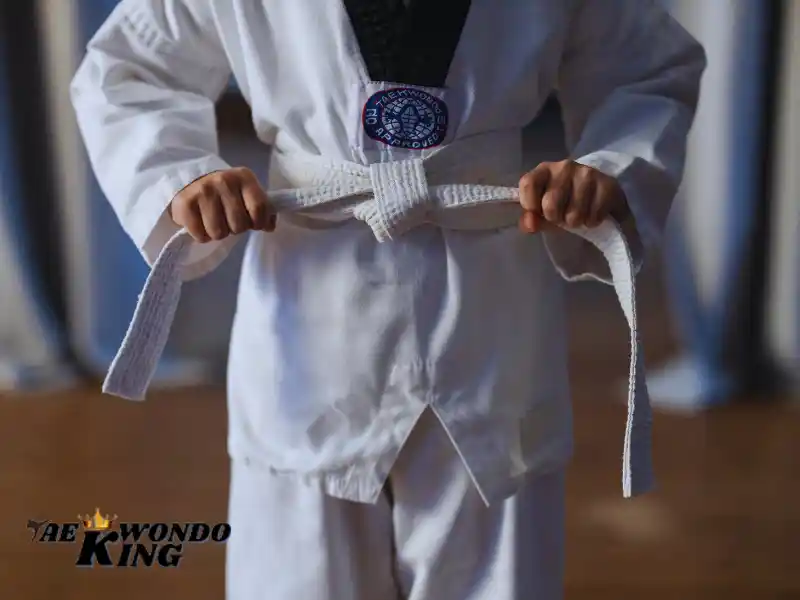
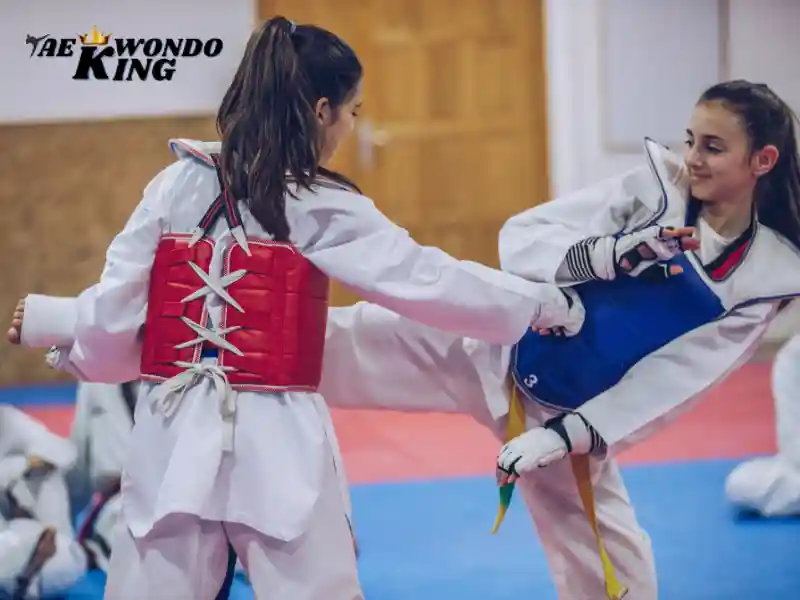
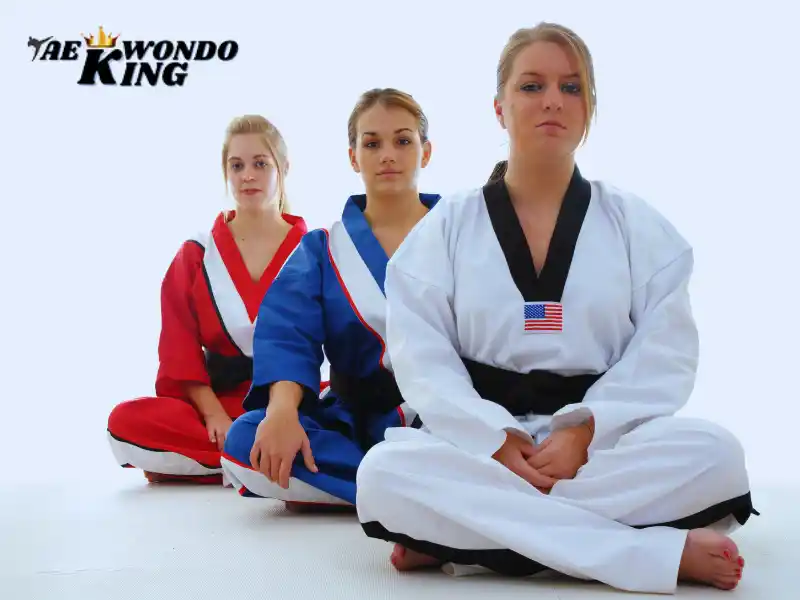
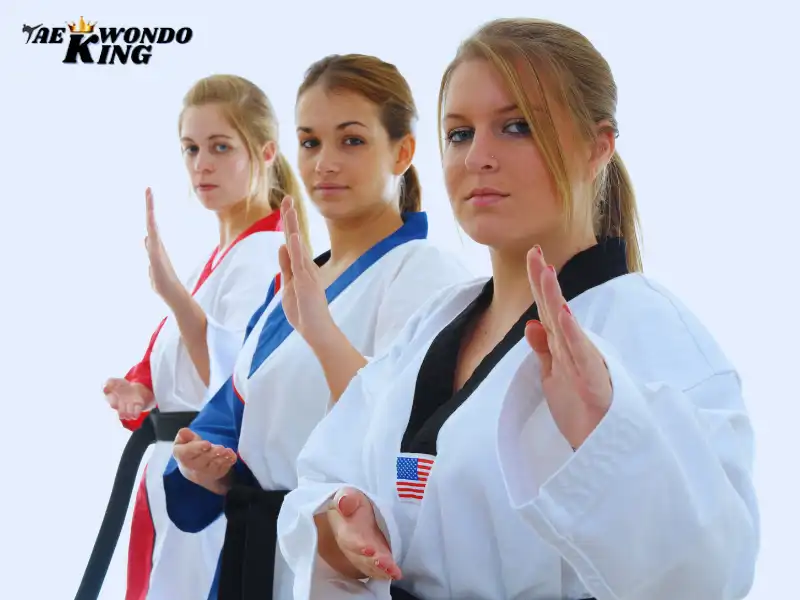
That is really attention-grabbing, You are an overly professional blogger. I’ve joined your rss feed and sit up for in search of more of your fantastic post. Also, I have shared your site in my social networks!
This blog is definitely rather handy since I’m at the moment creating an internet floral website – although I am only starting out therefore it’s really fairly small, nothing like this site. Can link to a few of the posts here as they are quite.
Thanks much.
Zoey Olsen
Your point of view caught my eye and was very interesting. Amazing content for martial arts enthusiasts like me. Thank you!